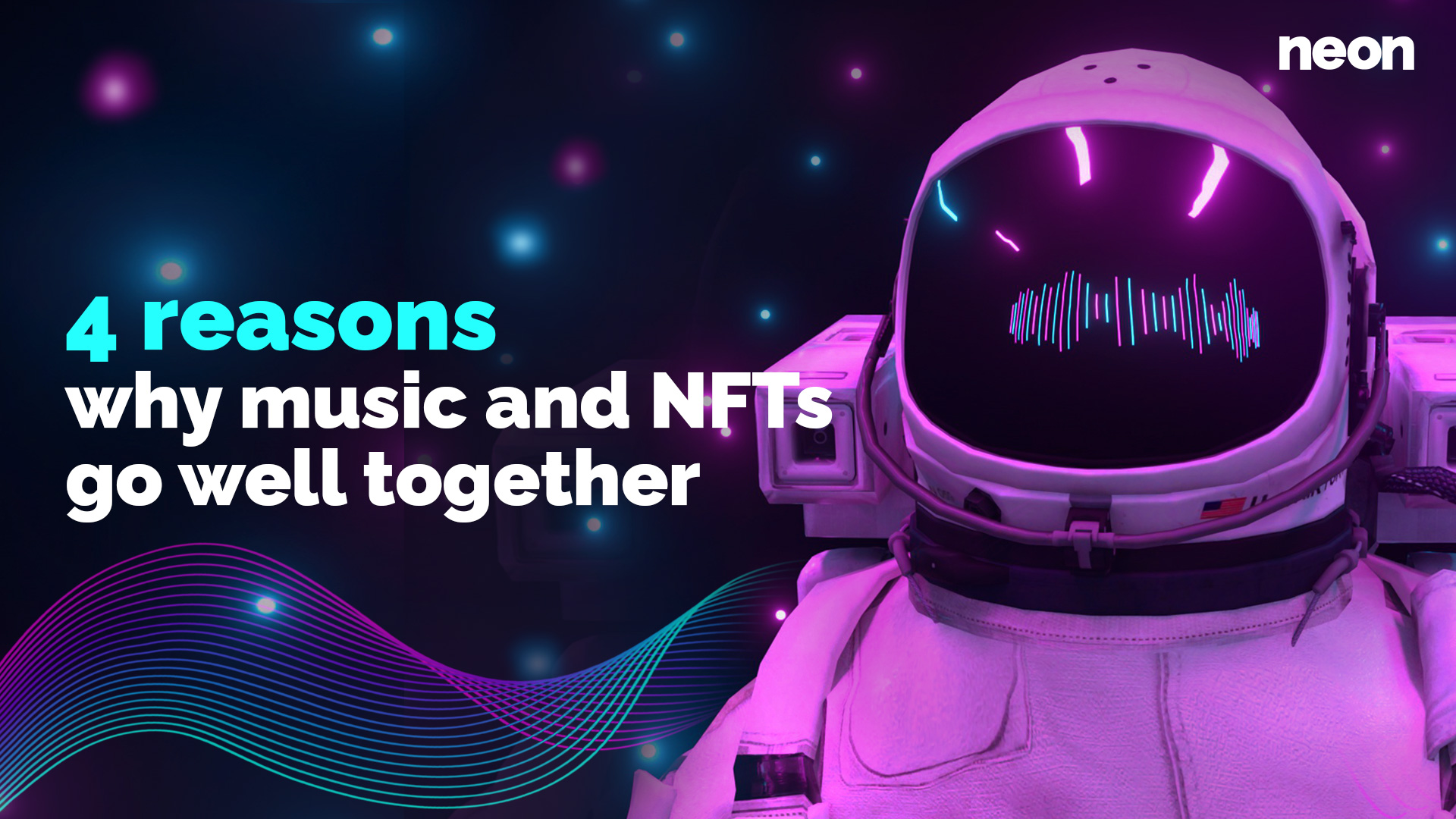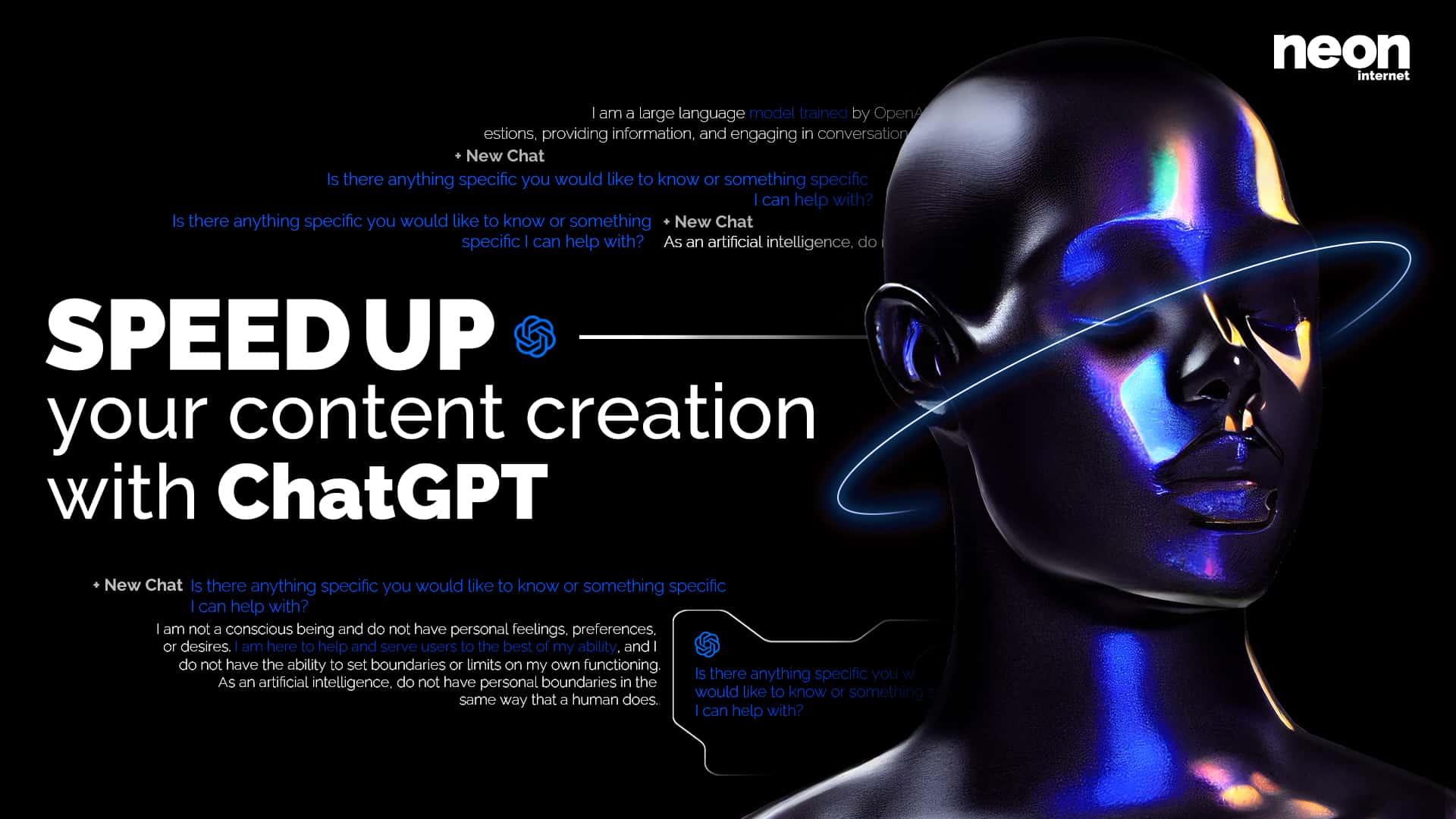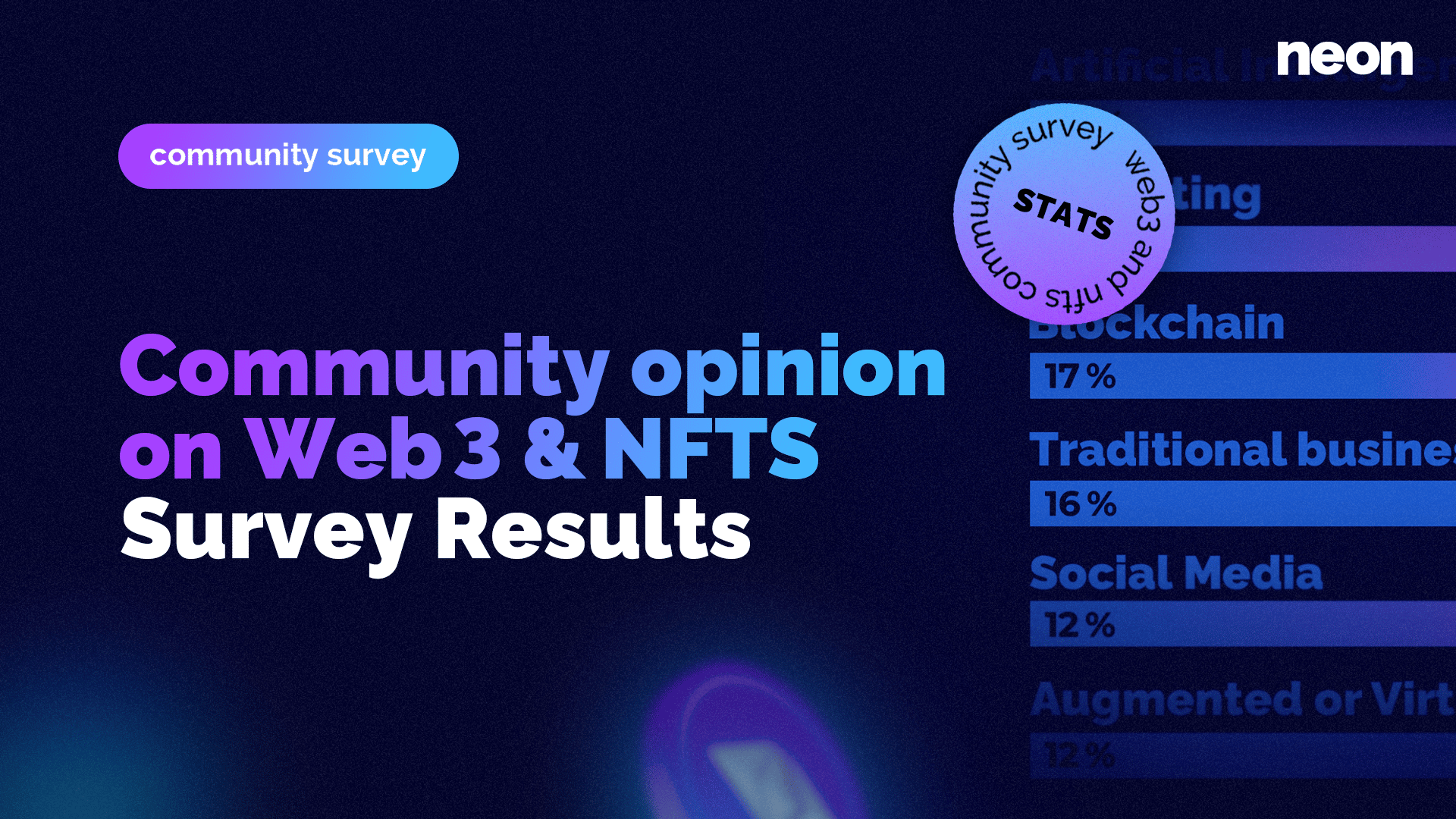Earlier this month, Spotify announced that they are working on implementations of NFTs on their music platform. As far as we have been able to find out, it will not be about music NFTs though – for now! However, we wanted to take the opportunity to show you why NFTs and music actually go together quite well and how the music industry and especially the artists could benefit from this technology.
Even if the absolute number of NFT sales is currently declining and the crypto market is not at its strongest, one trend is still pointing upwards: More and more large companies are hiring entire Web3 teams and more investment capital is flowing into the market. Spotify entering the ring could be good news for musicians for a change.
Spotify & NTFs
In this first phase, Spotify is running tests where it tries to help a small group of artists in promoting their existing (third-party) NFT offerings on their profiles. Users can then learn more about a particular NFT and purchase it through external marketplaces. This new feature comes free of cost, but currently has no direct integrations in Spotify’s own platform.
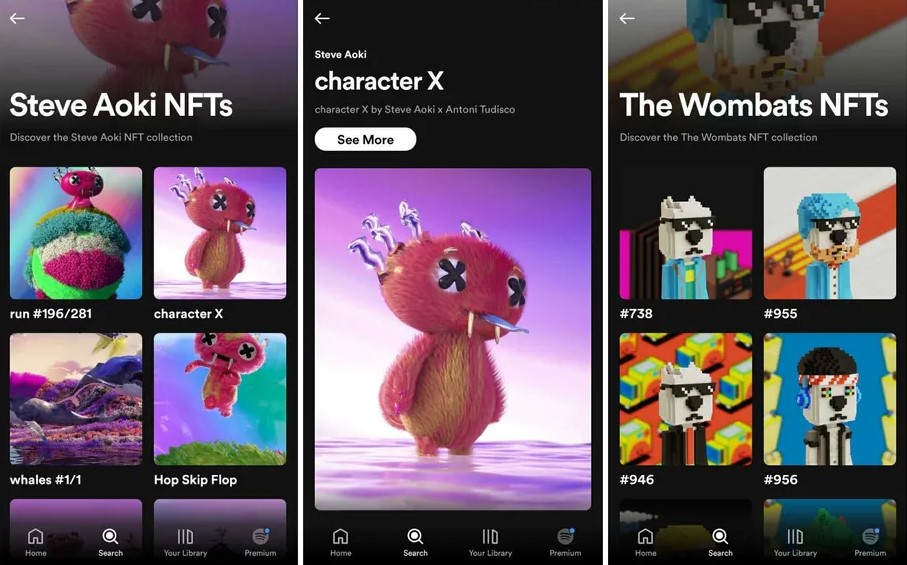
Spotify’s new NFT gallery feature
Furthermore, the app only displays static images/thumbnails of the NFTs. This means that an artist can exhibit his pieces, but without video or sound. So displaying the NFTs for now only means more visibility. However, Spotify definitely has the user base and power to start a revolution in the music industry.
NFTs – a potential chance for musicians 🎸
Over the last few years, streaming platforms have become the main channel through which we interact with music. They are convenient, the variety is endless, and the prices are low. This trend means that unrestricted listening to music is already almost entirely free of cost. In addition, a rough overview of streaming royalties clarifies one thing: streaming platforms (today) are nowhere near as good for artists as they are for listeners or the music industry.

Royalties on the biggest streaming platforms
Music streaming: curse and blessing 😐
For consumers, streaming platforms had an overall positive impact on the music industry. They also are a great tool for solo musicians to generate a decent income and reach a big audience. It would have been impossible to reach millions of people without a label a couple of years back. Yet, our daily consumption of music ultimately contributes only very little to the livelihood of the artists. Their most significant financial assets are often live shows, gigs, and other popular appearances as public figures or influencers.
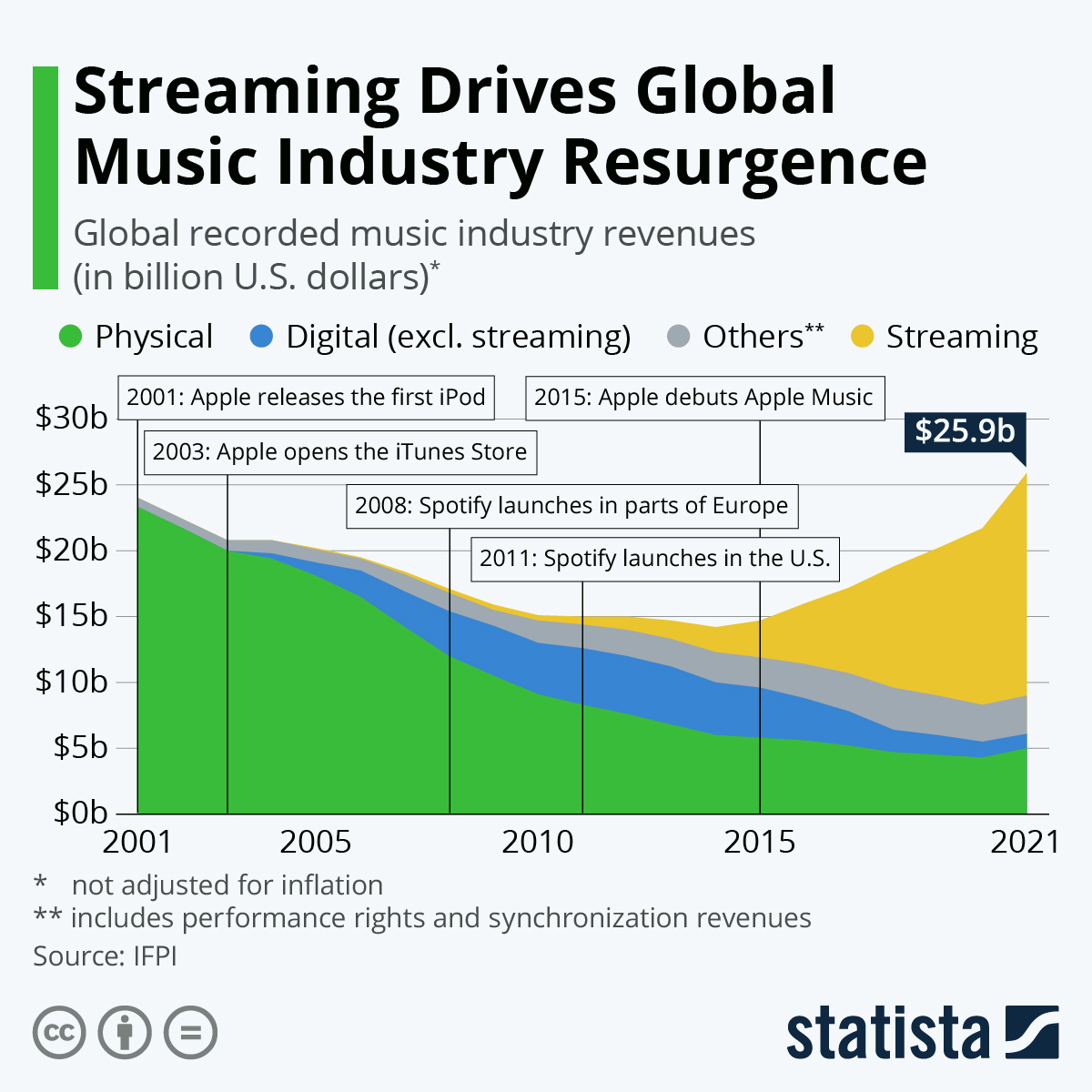
Evolution of the music industry revenue
Furthermore, it remains to be seen whether Web3 streaming platforms can really improve this situation. While the first Web3 streaming projects are already on the market (Audius, Opus, …) and have considerable user numbers, they do not solve all the problems. In addition, musicians usually earn a native token (e.g., $AUDIO on Audius) on those Web3 streaming platforms. They then have to swap for a different token to withdraw their revenue on a centralized exchange. All these steps make this use case not very beginner-friendly, nor risk-free, at least not for now.
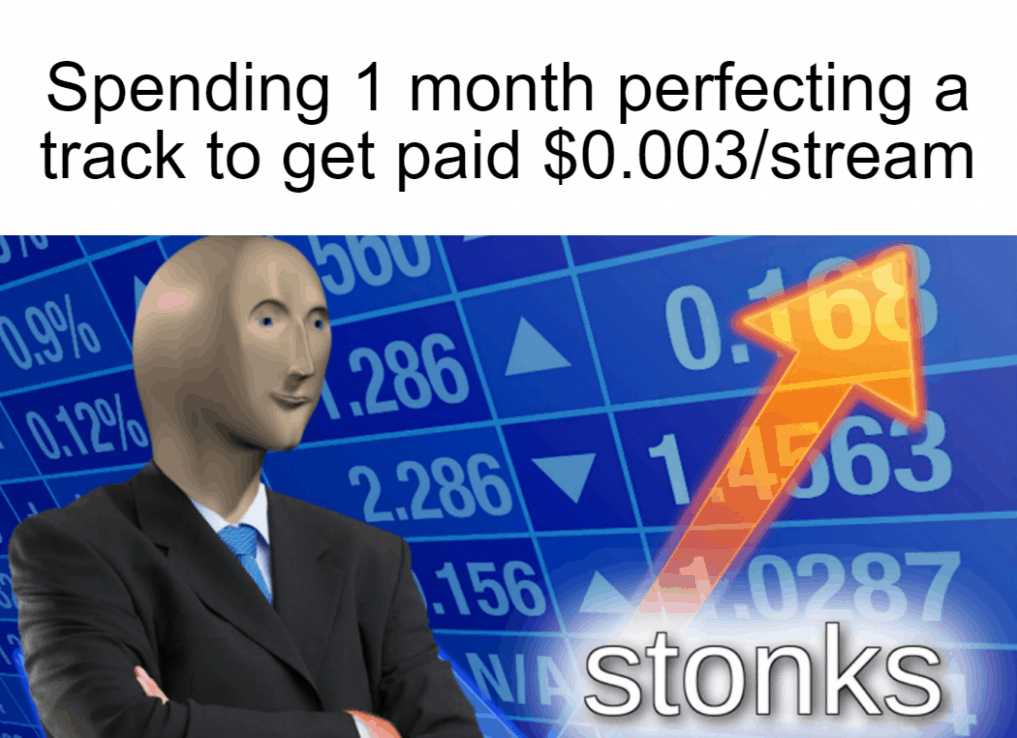
A new product is needed 🛍️
If nothing changes, musicians may eventually have almost nothing to gain from us listening to their music. At this point, music is no longer the actual product but rather the common ground connecting artists and listeners.
So a new main product would have to come along. Those products could be the community, events, collectibles, and shared ownership/participation. And this is precisely where this new technology (NFTs) can start to revitalize the industry and make it more efficient again for the creators. Similar to what’s going on with art and NFTs right now. NTFs have the potential to combine all of those new products.
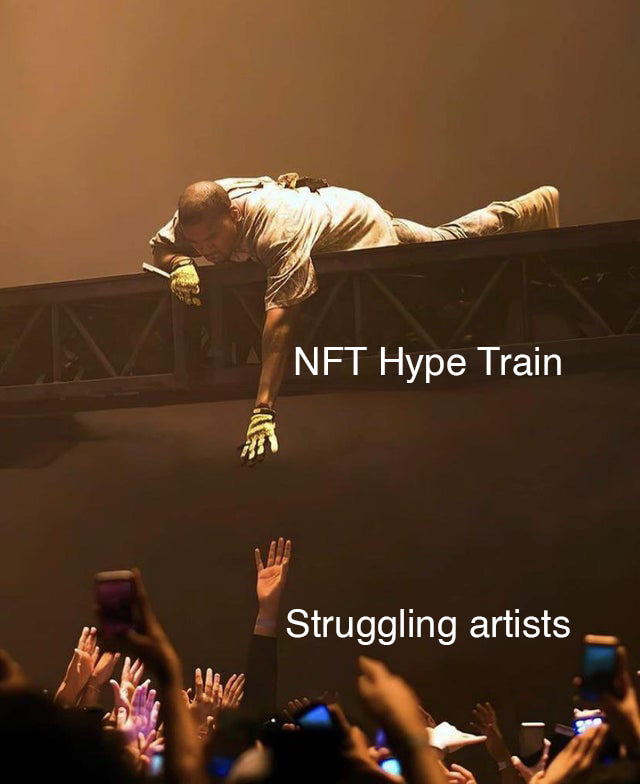
NFTs and the Web3 space offer a wide range of community building and monetization tools to own one’s audience and content. People do not pay to be able to consume and look at art. They pay to be the owner and to be part of a community.
How NFTs can help music 🎵
There are many creative approaches for combining music with NFTs and blockchain technology. We are just beginning to understand what is possible through the pioneering work of artists like 3LAU or Kings of Leon. And it is precisely this groundwork that shows us how NFTs can help artists, but also the music itself, to develop further. Even if said projects are abandoned over time or disappear into irrelevance. They help us recognize potential and do better in the future.
1) Music NFTs 💿
This is the most simple use case: plain and simple “Music NFTs” that give their owners specific rights over a music piece. Just as it works for digital (visual) art NFTs, an NFT can also be about musical content. Many musicians who started selling NFTs in 2021 were using this basic method to jump on the hype train. However, this initial hype has now cooled down and it should be obvious that musicians will not earn millions just because they’re suddenly selling their music as limited non-fungible tokens. However, the potential still exists, and more artists will try to develop creative concepts to provide utility outside of a simple music track, similar to the creator 3LAU.
💥 History has been made! The auction for the world’s first tokenized album has finished.
Built by @OriginProtocol & powered by #Dshop, @3LAU sold 33 unique NFTs for a total of $11,684,101.
This is a new record in a single #NFT auction. 🎉
https://t.co/4XmVj7VdAz pic.twitter.com/KZzlbBRj1Q
— Origin Protocol (@OriginProtocol) February 28, 2021
2) NTFs as keys 🗝️
Luckily for creators, NFTs can be much more than simple certificates of ownership for images or music tracks on the blockchain. They can e.g. serve as keys that allow your collectors to consume additional unpublished content or get access to special events. The possibilities are endless, as our CEO Misch Strotz has shown in this publication in 2021: NFTs as keys. This is a use case that would be very easy to apply to Spotify as well. If you connect your wallet to Spotify and own an artist’s NFTs, you get exclusive access to more of that artist’s content, to give a simple example.
But as we have already noted, the case could occur that the music itself will no longer be at the center. Instead of that, it could be all about your whole artistic universe and experiences. And your NFTs can be the key to your universe. Therefore becoming the new product.
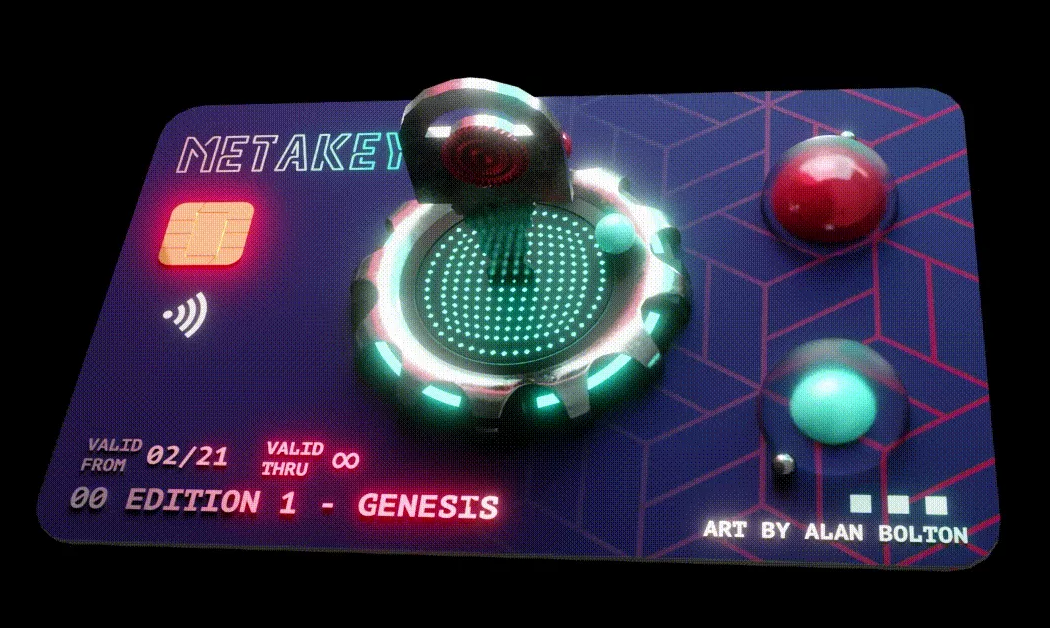
The Metakey NFT that you can find on Opensea
Two examples from the music industry that do exactly that are the A0k1verse that Steve Aoki is building and the Coachella event that grants lifetime passes through their NFTs. They are emblematic of what is already possible today. Since everything is still so new, it is difficult for new artists to stand out in this space. However, even in the NFT Art world, small projects manage to convince and attract large crowds, so it might be worth a try.
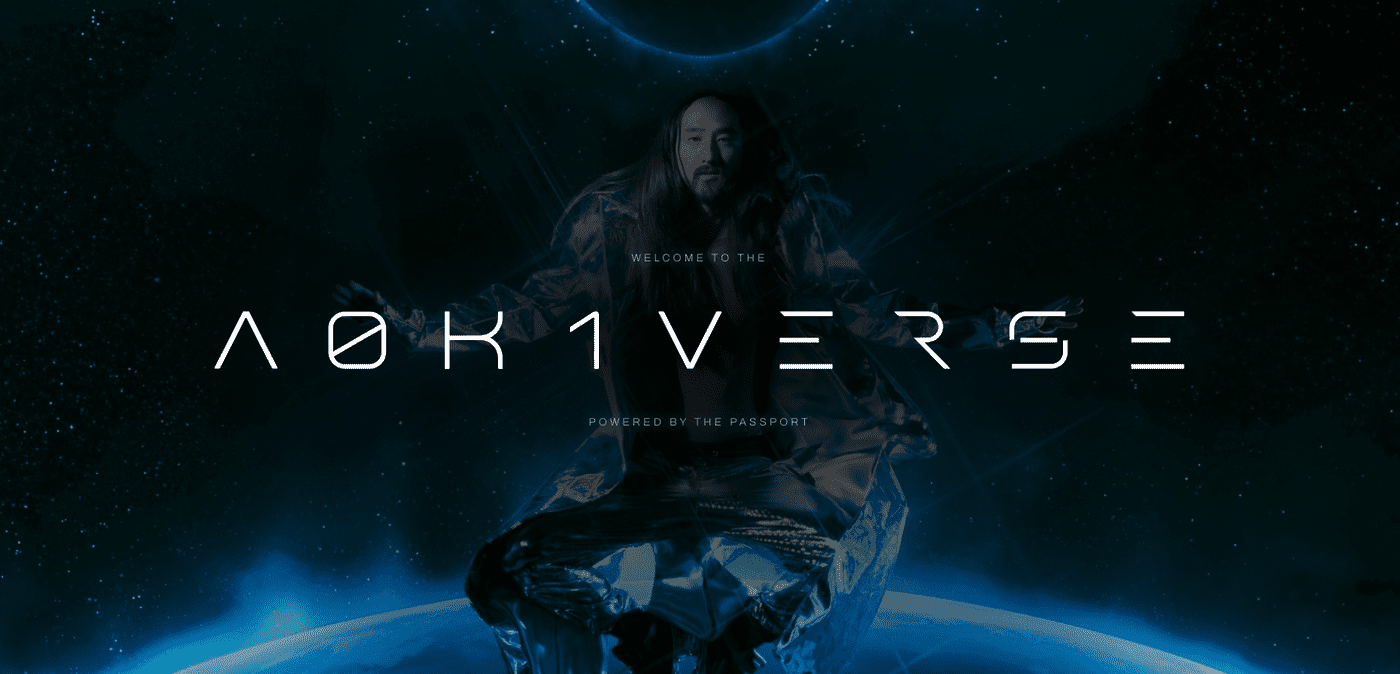
NFT-enabled membership club that offers access to both on-chain and physical experiences
3) Perpetual & automated royalties 💸
NFT marketplaces and Smart Contracts enable a new form of perpetual royalties. For example: Whenever a holder of an NFT (tokenized album, music NFT, etc.) decides to sell said NFT to someone else, you automatically receive royalties from this sale. This means that as an artist you are not only making money from selling your NFT to a collector but also whenever the collector decides to resell it on the secondary market.
To what extent this system is also applicable to Web3 streaming of music only time can tell us. One possibility would be that every off-chain stream of a song could result in an on-chain payment to the royalty recipient. However, for this to become reality, it will take more than a few small platforms and a lot of further development. If Spotify decides to actively innovate in this direction, it could fundamentally change the lives of musicians.
4) Share Intellectual Property 🤝
NFTs have been progressively bridging the gap between artists and their fans, thus enabling them to get even closer to the creations through direct ownership. Blockchain technology could eventually enable sharing of intellectual property with fans and collectors.
Through NFTs, fans could dynamically own a share of the intellectual property (and royalties), for example of one specific variation of a song, and simultaneously benefit from additional utilities that it provides. It will be up to musicians to decide how many rights come with owning their NFTs and under which creative license their music will be released. For Image NFTs like the Bored Ape Yacht Club or Cryptoadz, this is already a reality.

Special Note: Remember that owning NFTs doesn’t automatically mean that you own intellectual property, commercializing rights, or licenses to the piece of content behind it! By default, when you own an NFT, you own nothing more than a certificate of authenticity created by the issuer. We base ourselves on what is possible, not what is standard today.
Conclusion
By embracing NFTs and blockchain technology artists can regain full control over their intellectual property and revenue. The use of the blockchain to authenticate ownership and intellectual property is still in its teething stages. But the potential is already evident today.
Especially in the first phase of this new development, artists and consumers will still depend on labels, large music producers, and main platforms’ help (such as Spotify). But with time and newfound insight and knowledge, artists become more and more true owners of their music. And the fans become more and more direct investors and supporters.
And it won’t matter whether NFTs provide access to exclusive content or concerts, or if they are just a certificate of ownership for a piece of music on a blockchain. There will be enough use-cases for every artist and every fan.
